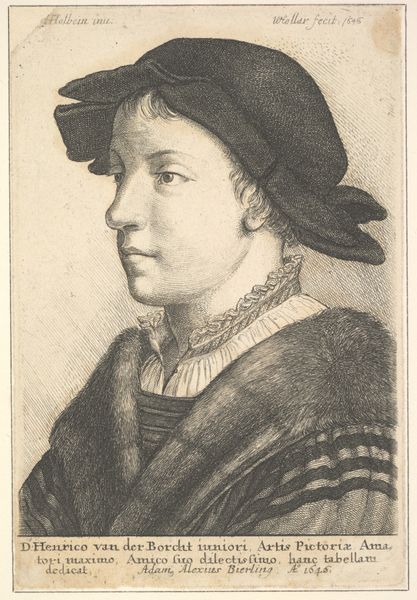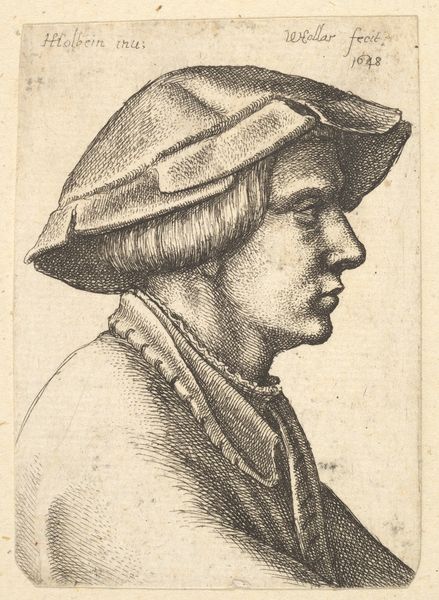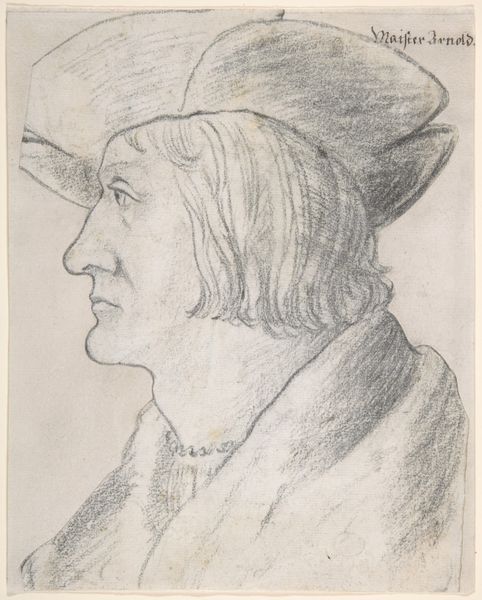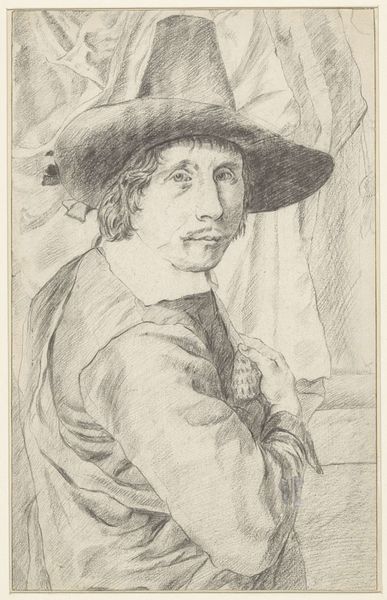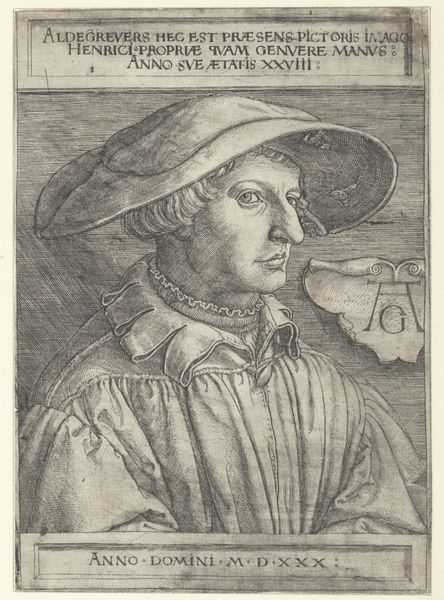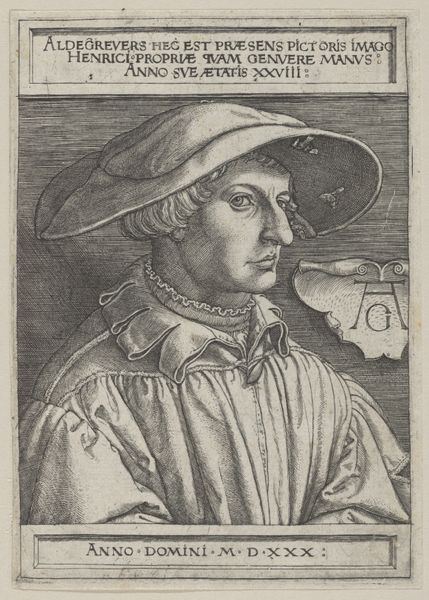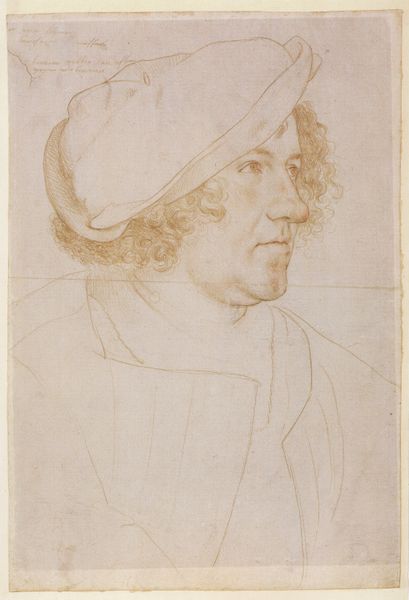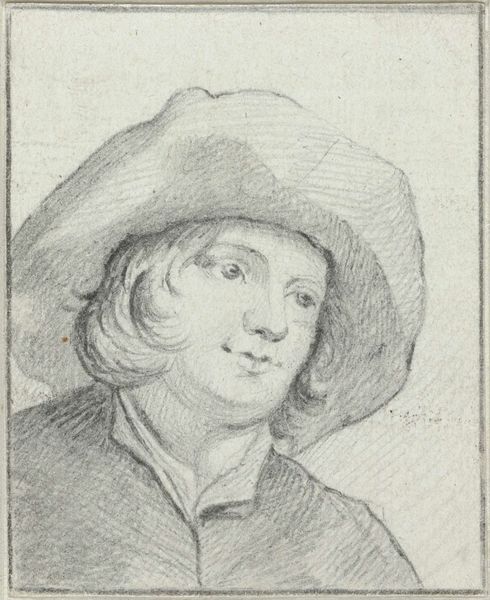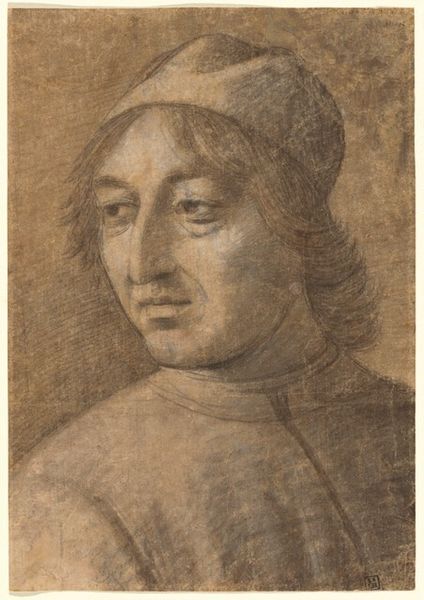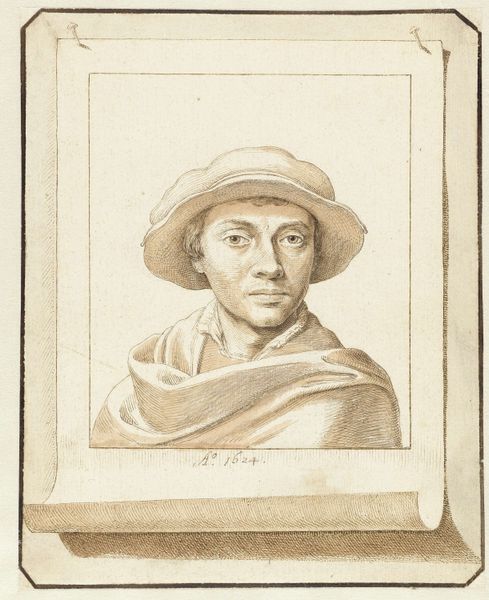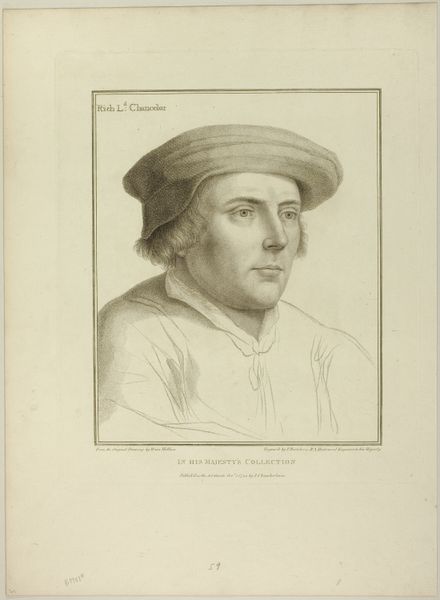
drawing, print, paper, engraving
#
portrait
#
drawing
#
photo restoration
# print
#
paper
#
portrait drawing
#
northern-renaissance
#
italian-renaissance
#
italy
#
engraving
#
portrait art
Dimensions: 381 × 275 mm (image); 431 × 318 mm (plate); 462 × 346 mm (sheet)
Copyright: Public Domain
Editor: Here we have Francesco Bartolozzi's engraving "John More," made in 1795. There's a quiet studiousness to this portrait that I find immediately striking. He is, after all, portrayed with a book. What stands out to you as you observe this image? Curator: The act of reading itself. Notice how his gaze is directed downwards, not meeting ours, but absorbed in the text. Reading, then as now, isn’t merely about information; it's a portal. It signified education, contemplation, and engagement with tradition. He becomes part of a lineage of learned individuals, carrying forward cultural memory. Does the subject’s clothing give you a certain feeling? Editor: Absolutely! The period clothing, particularly the cap, connects the work with an idea of "heritage" and echoes styles from prior eras, as if deliberately evoking memories of his ancestors, while also subtly indicating his status and identity through specific clothing styles. The textures give this impression too. I see the way his focus seems to be the text's visual element, an aesthetic aspect and his visual identity with the era of that work. What significance might there be? Curator: The emphasis isn't just on John More as an individual but as a continuation. Bartolozzi is interested in portraying More as a timeless figure deeply rooted in history. That the print was “In His Majesty’s Collection” tells you something, yes? Editor: Right, that the work’s origin comes from a noble collection reinforces a conscious construction of lineage and continuity. Curator: Exactly! In a time of shifting social and political landscapes, representing John More as a conduit to a stable past provides a potent symbolic image. This helps illustrate how cultural symbols act as psychological anchors. Editor: So, through Bartolozzi's portrayal of More engaged in reading, we glimpse at how portraiture operates within intricate webs of cultural memory and legacy, bridging temporal gaps to preserve specific ideological images. Curator: Precisely. A beautiful intersection of artistic skill and cultural transmission, wouldn’t you agree?
Comments
No comments
Be the first to comment and join the conversation on the ultimate creative platform.
